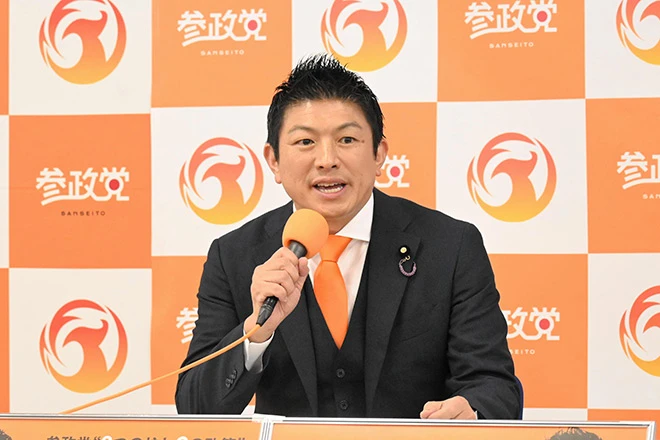Dan Lowe is the founder of Boston Intercultural Consulting, LLC, including its Japanese learning arm, japanesecircle.com. The following is part of a five-part series covering the “Big Five Common Enemies” Japanese language learners must confront to maximize their Japanese learning effectiveness:
- The Passive Kraken(受け身クラーケン)
- The Binge Beast(ドカ食いビースト)
- The Isolation Ghost(孤独ゴースト)
- The Friction Goblin(摩擦ゴブリン)
- The Slow-Mo Swamp(スローモー沼).
Introducing the Goblin
Together, we’ve escaped the Passive Kraken, resisted the Binge Beast, and busted the Isolation Ghost. The next monster waiting to derail your Japanese is the Friction Goblin. This sneaky creature hides your tools, adds tiny hassles, and makes starting feel like slogging through knee‑deep mud. Every second you waste choosing a review deck, selecting a JLPT book from your stack, or deciding which shiny new grammar app to use fuels the Goblin.

photo credit: Vikram Singh@unsplash.com
My Run‑In With the Friction Goblin
In early 2019, my Japanese habit hit a wall. I’d open my laptop only to find 10 tabs open with various Japanese resources and study tools. My Anki deck alone had 12 different decks running.
By the time I was “ready,” my motivation had evaporated, and I’d convince myself to tackle one task at a time. While that strategy sounds responsible, I felt distracted and overwhelmed by what awaited at the end of each task.
Even with the best of intentions, I had chased too many shiny objects. These little points of friction piled up until my study effectiveness approached near zero.
Psychologists liken this resistance to activation energy: a burst of mental effort is required to start a task. Neuroscientists find that complex, deliberate tasks engage our prefrontal cortex (System 2 thinking), requiring more energy, while automatic habits rely on the basal ganglia (System 1) and feel effortless.
In other words, it isn’t Japanese that’s exhausting: it’s the mental “startup” cost of hunting for materials and making choices.
Spotting the Friction Goblin
- Symptom #1: “Where is that deck again?” You waste time locating your flashcards, app, or notebook every session.
- Symptom #2: Decision fatigue. You keep switching between different resources (“Should I watch a video or review grammar?”), and end up doing nothing.
- Symptom #3: Stalled starts. You tell yourself you’ll study later because prepping feels like more work than learning itself.
Why the Goblin Wins
Humans have a natural status quo bias. We prefer inaction because it requires less energy. When the default option is to do nothing, we tend to stick with it.
Starting a study session means pushing against that inertia and every bit of friction. Opening multiple tabs, hunting for the right lesson raises the “activation energy” required to begin.
Implementation‑intention research shows that forming if‑then plans (“If it’s 9 AM, I open my Japanese doc”) links a cue to an action, making the behavior more automatic. In short, the Friction Goblin feeds on unspecific plans and cluttered environments.
How to Defeat the Friction Goblin: Make the Right Thing the Easy Thing
- One‑Tap Start. Put everything you need in a single folder or bookmark called “Start Here.” When it’s study time, there should be zero hunting -> open the folder and go. Pro tip: Most browsers’ bookmark tabs have an “open all” option or shortcut.
- Create a Japanese “kit.” Keep your flashcards, notebook, pens, and headphones in a dedicated pouch or bag. The kit should live wherever you usually study: on your desk, in your bag, or on your nightstand.
- Use If‑Then Triggers. Write one or two if‑then statements that link your study to an existing routine: “If I finish breakfast, then I open my flashcard deck.” These implementation intentions have been shown to close the gap between intention and action by making the cue highly accessible.
- Two-Minute Rule. When you’re tired, commit to just two minutes of study. Often, the most challenging part is starting; once you begin, momentum carries you forward. That said, I’ve fallen into the trap of lying to myself. If after 2 minutes the momentum isn’t there, move on to something easier to build momentum, then make another 2-minute promise.
Mini‑Quest: Today’s Challenge
- Assemble your Japanese kit and create a “Start Here” bookmark/folder with tomorrow’s lesson.
- Write one if‑then plan (e.g., “If I brush my teeth tonight, then I will practice five kanji”).
- For your next session, open your kit and begin immediately. No additional clicks allowed.
- We can do anything, but we can’t do everything. Commit to 1-3 resources at a time.
- Consider adding japanesecircle.com to these bookmarks, as it pairs well with other resources and helps build momentum.
That’s it! We have just one more enemy to tackle in our next and final post of the series: The Slow-Mo Swamp

Dan Lowe is the founder of Boston Intercultural Consulting, LLC, including its Japanese learning arm, japanesecircle.com. The following is part of a five-part series covering the “Big Five Common Enemies” Japanese language learners must confront to maximize their Japanese learning effectiveness:
- The Passive Kraken(受け身クラーケン)
- The Binge Beast(ドカ食いビースト)
- The Isolation Ghost(孤独ゴースト)
- The Friction Goblin(摩擦ゴブリン)
- The Slow-Mo Swamp(スローモー沼).
The Passive Kraken lulls you into inactive study, and the Binge Beast tempts you with marathon sessions. The Isolation Ghost, meanwhile, presents a nefarious opportunity cost. It’s a sneaky phantom that convinces you that to get better faster, you should prioritize isolated study time.
Yet, before you know it, weeks have passed without speaking a single Japanese sentence to another human. Further, you’ll find your progress stunted or studying in circles without positive role models to surround yourself with.
When I Let the Isolation Ghost In
Early on, I convinced myself that I had to “get good” before talking to anyone, especially in my professional life. I spent months with JLPT books, refusing invitations to practice with a friend because I was embarrassed by my mistakes, or because I mistook feeling for consistency.
My vocabulary grew to a point, but my confidence shrank. Without feedback or camaraderie, my motivation dried up.
Looking back, I see how that solitude slowed my progress. Research shows that language learning is fundamentally social.
Children learn language through back‑and‑forth interactions with caregivers, and “language learning takes place within the framework of social interaction”(ilabs.uw.edu).
Even babies exposed to a second language via live tutors discriminate sounds better than those exposed through recordings. More recent neuroimaging studies on adults confirm this: learners trained with mutual communication had faster reaction times for vocabulary and grammar and showed interbrain synchronization linked to better performance (pmc.ncbi.nlm.nih.gov).
In short, our brains are wired to learn language from others.
Spotting the Isolation Ghost
Symptom #1: You tell yourself you’ll start speaking “after you finish this textbook,” but you never reach out to anyone.
Symptom #2: You re‑Google the same grammar questions instead of asking a teacher or peer.
Symptom #3: You feel anxious and burnt out, even though you’re studying regularly. Without peer support, language‑learning anxiety and burnout rise; studies show that students with greater peer support experience less anxiety and perform better (frontiersin.org).
Why the Ghost Wins
The Isolation Ghost preys on fear and perfectionism. It feels safer to practice alone than risk embarrassment.
Yet isolation deprives you of the social cues, feedback, and motivation that make learning stick. Cognitive psychologists like Lev Vygotsky argued that learning first occurs between people and is only later internalized; the “Zone of Proximal Development” is reached when a more knowledgeable other scaffolds your learning (simplypsychology.org).
Peer support not only reduces anxiety but also creates a favorable emotional climate that improves performance and lowers burnout (frontiersin.org).
Social interaction even “gates” language learning by activating attention and motivation mechanisms in the brain. (pmc.ncbi.nlm.nih.gov).
How to Exorcise the Isolation Ghost: Build Community & Accountability
You don’t need to live in Japan to practice with others. Here’s how to invite connection into your routine:
- Find your learning tribe. Join a small online study group, a language exchange, or a forum like japanesecircle.com. Commit to sharing one “win” and one question each week. Knowing others are waiting for your update keeps you engaged.
- Schedule micro‑interactions. Book a chat with a tutor or buddy. Japanesecircle.com makes scheduling these chats easy. Even short conversations activate the social‑learning mechanisms that help you remember words and phrases (pmc.ncbi.nlm.nih.gov).
- Ask before you’re stuck. Instead of silently struggling, post your question in a community space or message a friend. Peer support not only answers your question, but it also reduces anxiety and builds group identity (frontiersin.org).
- Offer help. Teaching or explaining a concept to someone else deepens your own understanding and strengthens social bonds.
Mini‑Quest: This Week’s Challenge
- Join or form a group of at least two other learners (try japanesecircle.com or a local meetup).
- Share one thing you learned today and ask one question, no matter how basic.
- Schedule a short call or chat with a partner to practice a dialogue or exchange voice notes.
Remember: language is a team sport. Exorcise the Isolation Ghost by stepping into the conversation.
P.S. In our next post, we’ll confront the Friction Goblin(摩擦ゴブリン), the sneaky creature that hides your tools and adds tiny hassles until you quit. Stay tuned!
Japanese Learning Enemy #2: The Binge Beast

Photo credit Sindy Süßengut, Unsplash.com
Dan Lowe is the founder of Boston Intercultural Consulting, LLC, including its Japanese learning arm, japanesecircle.com. The following is part of a five-part series covering the “Big Five Common Enemies” Japanese language learners must confront to maximize their Japanese learning effectiveness:
- The Passive Kraken(受け身クラーケン)
- The Binge Beast(ドカ食いビースト)
- The Isolation Ghost(孤独ゴースト)
- The Friction Goblin(摩擦ゴブリン)
- The Slow-Mo Swamp(スローモー沼).
You’ve met the Passive Kraken. Now it’s time to face its gluttonous cousin: the Binge Beast. This monster coaxes you into weekend study marathons and prolonged midweek droughts.
If you’ve ever thought, “I’ll catch up on Sunday,” only to abandon Japanese entirely by Tuesday, you’ve already encountered it.
My Brush With the Binge Beast
Early [and sometimes later] in my Japanese journey, I’d regularly binge‑study on Saturdays. I’d blaze through grammar guides, watch hours of content, and cram hundreds of flashcards in one sitting.
I’d finish the day exhausted yet oddly proud. Then I’d feel so scarred from the experience that I’d skip the next three or four days, telling myself the weekend “should count for something.”
It didn’t. By Thursday, most of what I’d “learned” had evaporated.
Research shows this isn’t just my imagination: massed practice (cramming all study into one session) produces short‑lived gains but poor long‑term retention. Even when you hold constant total study time, spacing the same material across several sessions leads to significantly better memory.
Even worse, batching our study into binge days encourages stress and procrastination. In the days leading up to the session, our imaginations feed the task at hand, and what might have been a kitten on Monday is a sabertooth tiger by Saturday.
Spotting the Binge Beast
Symptom #1: “I’ll make up for it later.” You regularly skip midweek study because you plan to compensate with a big session on the weekend.
Symptom #2: Boom‑and‑bust cycles. Some weeks you study ten hours; other weeks, nothing. This practice leads to guilt and burnout.
Symptom #3: Forgetting. Despite long sessions, you find yourself relearning the exact words and grammar because massed practice doesn’t allow information to consolidate into long‑term memory.
Why the Binge Beast Wins
Intensity is seductive. A marathon study session feels productive, and finishing an extended assignment in one sitting gives a temporary sense of accomplishment.
But our brains aren’t wired that way. Memory researchers have known since Ebbinghaus’s 19th‑century experiments that spaced practice, not cramming, leads to durable learning.
When we cram, the material stays in short‑term working memory, which breeds familiarity and lowers attention. Spaced sessions break this familiarity, so each return to the material feels slightly new, prompting you to allocate more attention and encode it more deeply.
Studies on second‑language learners show they remember vocabulary better when they space out repetitions rather than cramming them.
The science is precise: the spacing effect is one of the most robust findings in psychology, with hundreds of studies confirming that long‑term memory improves when you space apart learning events rather than massing them together.
Yet we gravitate toward binge sessions because we underestimate how quickly we forget and overestimate the effectiveness of cramming.
How to Slay the Binge Beast: Build a Non‑Zero Daily Habit
Think of beating the Binge Beast like training for a marathon: consistent daily runs beat occasional all‑night sprints.
- Set a “Minimum Effective Dose.” Decide on a daily minimum: three, five, or ten minutes; that’s so small you can’t skip it. The goal is not to do as much as possible but to avoid doing nothing.
- Schedule Micro‑Sessions. Break your study into mini‑blocks across the day (e.g., morning flashcards, lunchtime grammar, evening conversation). Research shows that spreading sessions even a day apart improves retention.
- Stack and Trigger. Attach your Japanese habit to an existing routine. For example, review two flashcards right after brushing your teeth or listen to a podcast while making coffee. The easier it is to start, the less the beast can tempt you to delay.
Consistency need not be perfect. If you miss a day, get back on track the next. What matters is that binge sessions become the exception, not the rule.
Mini‑Quest: This Week’s Challenge
- Set your daily minimum time (5–10 minutes) for the next seven days.
- Break it into two or three short sessions if you can: morning, afternoon, and evening.
- At the end of each day, jot down one new word or phrase you learned and post it in a journal, or in the free Wins & Learnings space on japanesecircle.com.
Remember: consistency beats intensity when intensity isn’t consistent. Let’s starve the Binge Beast together and build habits that last!
Next time, we’ll challenge Japanese Learning Enemy #3: The Isolation Ghost(孤独ゴースト).
Job: JET Program USA, Temporary Processing Staff – Embassy of Japan (Washington, D.C., USA)
Posted by Sydney Sparrow. Click here to join the JETwit Jobs Google Group and receive job listings even sooner by email.
Position: JET Program USA, Temporary Processing Staff
Posted by: Embassy of Japan in Washington, D.C.
Location: Washington, D.C., USA
Contract: Full-Time
Thanks to the Embassy of Japan in Washington, D.C. for passing along the following job opening.
The JET Program Office at the Embassy of Japan is seeking Processing Staff for the 2026 JET Application processing season. Processing staff will have the opportunity to learn more about the JET Program from an administrative perspective. This is a temporary position from November 5, 2025 (Wednesday) to December 19, 2025 (Friday) with the possibility of some flexibility in start and end dates. This is an in-person position based out of our office at the Embassy of Japan in Washington, D.C.
Deadline:
Applicants are strongly encouraged to send their materials as soon as possible and before the priority deadline of Friday, October 24, 2025, at 5:00PM Eastern Time. For applications who submit materials by October 24 and are accepted past the first stage, phone interviews will be offered between Tuesday, October 28 to Wednesday, October 29. For those who do not meet the priority deadline, the final deadline is Wednesday, October 29, 2025, at 5:00PM Eastern Time.
Japanese Learning Enemy #1: The Passive Kraken

Dan Lowe is the founder of Boston Intercultural Consulting, LLC, including its Japanese learning arm, japanesecircle.com. The following is part of a five-part series covering the “Big Five Common Enemies” Japanese language learners must confront to maximize their Japanese learning effectiveness:
- The Passive Kraken(受け身クラーケン)
- The Binge Beast(ドカ食いビースト)
- The Isolation Ghost(孤独ゴースト)
- The Friction Goblin(摩擦ゴブリン)
- The Slow-Mo Swamp(スローモー沼).
Sailing in Dangerous Waters
I remember sitting at my desk in October 2020, feeling defeated. The world had shut down months earlier, and I had just hit a six‑month Japanese learning streak with my Anki flashcards.
I should have felt proud, but I couldn’t tell you what I’d studied that morning, and day after day of clicking the space bar had become an empty habit. Six months at 30 minutes a day. How much time had I wasted?
It turns out I was losing to the Passive Kraken, the monster that convinces you that passive study is “good enough.”
Spotting the Passive Kraken
Symptom #1: You can recite the days of your streak, but can’t recall yesterday’s learning concepts without peeking.
Symptom #2: “Study” looks like mindlessly flipping flashcards or Duolingo with no output.
Symptom #3: You dread doing anything beyond your comfort zone, because repeating the familiar feels like progress.
I realized I wasn’t learning Japanese; I was perfecting a routine. Consistency is essential, but only if what you repeat actually stretches you.
Why the Kraken Wins
Passive learning feels safe, much like sailing in familiar waters close to the coast. Input is addictive because it tricks you into believing you’re moving forward without the risk of making mistakes. There’s no embarrassment, no fumbling through a sentence.
Unfortunately, you’re not building any fundamental skills. As long as we keep the Kraken happy with easy tasks, it will lull us into stagnation.
How to Fight Back (10‑Minute Active Learning Workout)
Think of active learning like a workout, whether that be for health or to battle krakens: warm up, heavy lifting, cool down. You don’t need to move to Japan or re-enroll in university to make it effective.
Warm‑up (3–5 min): Do a bit of passive input: flip through a few flashcards, read a short article, or listen to a song. Get your brain in “Japanese mode.”
Heavy lifting (4–5 min): Without looking back at the material, open a blank document and record everything you can recall. Shadow a sentence out loud, jot down new words in a sentence, or summarize what you read. It will feel uncomfortable. That’s the point.
Cool‑down (1–2 min): Share your notes in a community space like a language circle or with a study buddy. Saying it out loud or posting it turns recall into real use. If you’re looking for a safe place to post, japanesecircle.com has a designated space explicitly for this purpose.
For tricky concepts, attach them to an emotional memory: the embarrassment of mispronouncing a word in front of a native speaker or the joy of understanding a lyric. Emotional hooks make memories stick.
Mini‑Quest: Today’s Challenge
- Do your usual passive study for five minutes.
- Immediately afterwards, recall everything you can. Speak or write, no peeking.
- Share your recall (or a summary of it) with someone else. A quick community post on japanesecircle.com, a voice memo to a friend, or even talking to yourself in the mirror counts!
P.S. In my next post, I’ll introduce the Binge Beast (ドカ食いビースト), the monster that pushes weekend marathons and weekday droughts. Stay tuned!
Job: Study Abroad Advisor – Kansas State University (Manhattan, KS, USA)
Posted by Sydney Sparrow. Click here to join the JETwit Jobs Google Group and receive job listings even sooner by email.
Position: Study Abroad Advisor
Posted by: Kansas State University
Location: Manhattan, KS, USA
Contract: Full-Time
Thanks to Savannah Maynard (Nara, 2022-2025) for passing along the following job opening.
The Study Abroad Advisor provides guidance and outstanding professional service to students before, during, and after their educational experience abroad. The Advisor informs students, parents, faculty, and staff about various study, internship, service, and research opportunities abroad, and coordinates with relevant academic and administrative offices. The Advisor also assists with coordinating program and application processes and participates in campus recruitment and promotion, as well as participant selection.
The Study Abroad Advisor works with overseas partners to obtain information regarding application processes, course selection, arrival information, accommodation, and other relevant information. Some national and international travel is expected.
Application Process: For more information and to apply, please click here – https://forumea.mcjobboard.net/jobs/202430
JQ Magazine: Nippon in New York – ‘100 Meters,’ New York Comic-Con, ‘Chainsaw Man – The Movie: Reze Arc’
BBy JQ magazine editor Justin Tedaldi (CIR Kobe-shi, 2001-02). Justin has written about Japanese arts and entertainment for JETAA since 2005. For more of his articles, click here.
As the summer days fade into fall colors, the weeks ahead are shaping up with these exciting events, ready to be enjoyed all through Halloween.
This month’s highlights include:

Wednesday, October 8, 7:00 p.m.
100 Meters Premiere with Director Kenji Iwaisawa
Japan Society, 333 East 47th Street
$20-$26
East Coast premiere! 100 Meters follows Togashi, a track star who is born to run. As a kid, he is naturally gifted and wins every 100-meter race without effort. But in sixth grade, he meets Komiya, a transfer student who is full of determination but lacks technique. In teaching him, Togashi gives Komiya a new purpose: to win no matter what. Years pass by, and Togashi and Komiya meet again as rivals on the track and reveal their true selves. Helmed by director Kenji Iwaisawa, who quickly rose to prominence for his debut film, ON-GAKU: Our Sound, 100 Meters is a heart-pounding adaptation of the beloved manga by Uoto. The film is written by Yasuyuki Muto (Mobile Suit Gundam: Hathaway, Tokyo Revengers), with a score by Hiroaki Tsutsumi (Jujutsu Kaisen, Tokyo Revengers, Dr. Stone).

Oct. 9-12
Jacob K. Javits Convention Center, 429 Eleventh Avenue
$90 (daily), $280 (4-day pass)
Breaking attendance records each year, the East Coast’s biggest gathering for fans of comics, film, anime and manga returns with its biggest roster of Hollywood talent to date, featuring exclusive screenings, gaming, cosplay photo ops, and more! Enjoy interactive panels and content from brands like Viz, Atsuko and Bandai Namco, and check out exclusive booths and artists alley to pick up con-exclusive merch and pre-release titles. Special anime-related events presented by Crunchyroll this year include Ghosts, Aliens, and Supernatural Shenanigans! Starring the English Voice Cast of DAN DA DAN, Campfire Cooking in Another World with My Absurd Skill Season 2 – Special Premiere Screening, and TRIGUN STARGAZE Special Premiere ft. Author Yasuhiro Nightow! Also check out signings by The Legend of Zelda manga duo Akira Himekawa, and Scholastic’s Graphix works including Unico: Awakening and The Baby-Sitters Club!

Wednesday, October 8, 7:00 p.m.
Author Talk: Jake Adelstein and The Devil Takes Bitcoin
Japan Society, 333 East 47th Street
$20-$25
Japan Society is honored to welcome bestselling author Jake Adelstein for a special talk and signing in celebration of the release of his newest book,The Devil Takes Bitcoin: Cryptocurrency Crimes and the Japanese Connection. From the author of Tokyo Vice comes the wild, true story of cyber-era commerce, crime, cold-hard cash, and one of the greatest heists in history. The Devil Takes Bitcoin tells the true story of the humble-to-hot commodity, from the former geek website that launched the boom to an inside world of absent-minded CEOs, hucksters, hackers, cybercrooks, drug dealers, corrupt federal agents, evangelical libertarians, and clueless techies. Attendees of this talk and signing will be able to purchase copies of The Devil Takes Bitcoin, Tokyo Vice, and Adelstein’s other books at the event or bring books from home for a signing session following the author’s talk.
Read MoreJob: Economic Affairs Analyst – Consulate-General of Japan in Houston (Houston, TX, USA)
Posted by Sydney Sparrow. Click here to join the JETwit Jobs Google Group and receive job listings even sooner by email.
Position: Economic Affairs Analyst
Posted by: Consulate-General of Japan in Houston
Location: Houston, TX, USA
Contract: Full-Time
Thanks to Matthew Klein (Niigata-ken, Nagaoka-shi, 2014-2019) for passing along the following job opening.
Primary Duties & Responsibilities:
○Set appointments and arrange meetings for diplomatic officials.
○Participate in and assist with hosting various events.
(Please note that (1) this includes but is not limited to tasks like, coordinating business lunches or dinners, preparing invitations and name cards, preparing guest lists of invitees to the Consulate-General’s receptions, working as an assistant staffer at political, economic and PR/cultural events held outside the Consulate, taking notes during conferences or panel discussions, working in close cooperation with the secretary to the Consul General, and that (2) the employee may be instructed to assist with events and projects that do not directly fall under the responsibilities of the political/economic section, but instead fall under the responsibilities of other sections, if such events and projects carry significant importance to the functioning of the Consulate-General as a whole.)
Job: University Scholarship Coordinator – Temple University (Tokyo, Japan)
Posted by Sydney Sparrow. Click here to join the JETwit Jobs Google Group and receive job listings even sooner by email.
Position: University Scholarship Coordinator
Posted by: Temple University, Japan Campus
Location: Tokyo, Japan
Contract: Full-Time
Thanks to Temple University, Japan Campus for passing along the following job opening.
Overview of Position
Starting Fall 2025, TUJ Tokyo will expand the Office of Student Services and Engagement team to include the University Scholarship Coordinator. This person will manage the administration of university scholarship programs for both new and continuing students and will be the point person for students to consult on both internal and external scholarships. The University Scholarship Coordinator will work with the director and senior management to develop a centralized system to manage scholarships across the university and to streamline the application and selection processes. The University Scholarship Coordinator will be responsible for researching external scholarship opportunities that match the varying backgrounds of students at TUJ and marketing those opportunities to the students.
About the Office of Students Services and Engagement (OSSE), our office provides high-quality services to TUJ’s diverse student population to support their success and well-being as they become members of the university community. OSSE assists incoming students with student visa applications, financial aid, housing, and organizes orientations to help students adapt to the academic and social life at TUJ. OSSE also oversees student activities and events both on and off campus and works with various student groups to encourage social interaction among students. As a member of the Office of Student Services and Engagement, you will have the opportunity to support off-campus student activities and excursions.
sparrosd@gmail.comJob: Japanese Language Immersion K-3 Teacher – John Stanford International Elementary School (Seattle, WA, USA)
Posted by Sydney Sparrow. Click here to join the JETwit Jobs Google Group and receive job listings even sooner by email.
Position: Japanese Language Immersion K-3 Teacher
Posted by:John Stanford International Elementary School
Location: Seattle, WA, USA
Contract: Full-Time
Thanks to Seattle Public Schools – John Stanford International Elementary School for passing along the following job opening.
Overview of Position
A classroom teacher fosters and enhances an effective learning environment; facilitates the development or revision of curriculum and instructional materials; establishes learning objectives and standards based upon general District guidelines; provides instruction; counsels, disciplines, and supervises to meet the individual needs of assigned students, and evaluates student performance and progress.
This position is in a Japanese dual language immersion program. Students receive instruction in English and Japanese. Teachers must have an Elementary Education endorsement and be able to read, write, speak, and listen in Japanese.
Essential Functions
Fosters an educational environment conducive to the learning and maturation process of assigned students; plans an instructional program designed to meet individual student needs and whole groups which may include at risk or special needs youth; prepares lesson plans.
Job: Researcher – Quick USA (New York, NY, USA)
Posted by Sydney Sparrow. Click here to join the JETwit Jobs Google Group and receive job listings even sooner by email.
Position: Researcher
Posted by: Quick USA
Location: New York, NY, USA
Contract: Full-Time
Thanks to Quick USA, ACTUS, PASONA for passing along the following job opening.
A Japanese Organization is currently looking for a full time Researcher to join their New York, NY location.
This position is looking for candidates with great research skills who are proactive and have previous experience, knowledge and/or interest in Japanese companies as well as great communication skills and an affinity for Japanese culture.
JET Alumni would be a great fit for this position. Although proficiency in Japanese is not required, it would definitely be a plus. DOE and skills, this position could pay between 50k-53k with great benefits.
Essential Duties:
1. Arranging appointments
・ In the case of a request from a Japanese local government, the researcher will work together with a Japanese staff member under the direction and supervision of the deputy director in charge. (If there is no request form in English, the Japanese staff member will explain the purpose of the request to the researcher and confirm and coordinate with the Japanese local government as necessary).
・ Although the agency or organization with which the appointment is to be made is often identified in advance, it is necessary to coordinate with the client, taking into consideration their circumstances, as to the specific interviewee and the time of the meeting.
WIT Life #387: MIGA and other post-election stirrings
Interpreter/Translator/Writer Stacy Smith (Kumamoto-ken CIR, 2000-03) presents WIT Life, a periodic series about aspects of Japanese culture such as art, film, food and language. Stacy starts her day by watching Fujisankei’s newscast in Japanese, and here she offers some interesting tidbits and trends along with her own observations.
Japan’s ruling Liberal Democratic Party (LDP) coalition lost its longtime majority in the upper house of the Diet to a variety of opposition parties in last weekend’s election. The LDP had also lost its lower house majority in an election last fall, making this election the first time since the party’s 1955 founding that its coalition lost majorities in both legislative houses. Following the death of former Prime Minister Shinzo Abe, the conservative LDP has shifted more toward the center and other right-wing parties have swooped in to fill the gap.

Most notable is the relatively new Sanseito (参政党 or Participate in Politics party), an ultra-conservative, right-wing populist party that campaigned on a “Japanese First” agenda and railed against the deluge of foreign tourists and foreign buying of Japanese homes. In its appeal to younger voters, in addition to its anti-immigrant stance Sanseito also seeks to raise wages and break the grip that older voters have held on politics (it also espouses the retrogressive idea that women should be less career-focused and have more children). Sanseito is led by Secretary-General Sohei Kamiya, a 47-year old former teacher who has cited Trump as his inspiration. He founded the party in early 2020 along with two others who have since left. At the time they gained prominence via a YouTube channel that spread conspiracy theories about vaccines.
Read MoreJob: Japanese Bilingual Sales Representative – Quick USA (Erlanger, KY, USA)
Posted by Sydney Sparrow. Click here to join the JETwit Jobs Google Group and receive job listings even sooner by email.
Position: Japanese Bilingual Sales Representative
Posted by: Quick USA
Location: Erlanger, KY, USA
Contract: Full-Time
Thanks to Carlos (Oita Prefecture, 2019-2022) for passing along the following job opening.
A Japanese Manufacturing company is currently looking for a full time, hybrid Japanese Bilingual Sales Representative for their Erlanger, KY location.
This entry-level position is ideal for candidates interested in sales administration, with the potential to grow into a Sales Representative role. The company values cross-cultural communication and provides opportunities to work with both domestic and international clients. The environment is multicultural, fast-paced, and focused on continuous improvement.
DOE and skills, the pay range for this position would be around 40k-50k. This position also includes great benefits such as medical, dental, vision and life insurance (no employee contribution needed), 401k plan with 4% company match and business travel expense covered.
sparrosd@gmail.comWIT Life #386: 25 Cats from Qatar & Nippon Steel success
Interpreter/Translator/Writer Stacy Smith (Kumamoto-ken CIR, 2000-03) presents WIT Life, a periodic series about aspects of Japanese culture such as art, film, food and language. Stacy starts her day by watching Fujisankei’s newscast in Japanese, and here she offers some interesting tidbits and trends along with her own observations.
As I’m sure everyone can relate, recent domestic and world events have taken a great toll so I’ve been seeking solace wherever I can find it. Last night that was by going to see the documentary 25 Cats from Qatar at the Museum of the Moving Image (Tokyo Cowboy co-writer Dave Boyle is one of its producers). It features Katy McHugh, a flight attendant and Midwestern cat cafe owner who saves cats from around the world by bringing them to the U.S. for adoption. The film depicts her latest rescue mission in Qatar, a wealthy country powered by the migrant workers who make up 89% of its 3 million population. This is also the population of its street cats, 25 of whom McHugh plans to fly back to her cafe after careful selection.

The film has both tragic and heartwarming elements (often in the same scene), and many tears were shed by the audience. The behind-the-scenes stories shared during the post-screening Q&A with director Mye Hoang and McHugh were a bonus. They will be on hand for an encore show at the Angelika tomorrow at 7 p.m if you want to see the film before it moves to other parts of the country. It’s a fundraiser for LIC Feral Feeders & Cat Rescue, so please show some love by donating when you buy your ticket.
Read MoreJob: Program Manager – U.S.-Japan Council (Washington, D.C. or Remote)
Posted by Sydney Sparrow. Click here to join the JETwit Jobs Google Group and receive job listings even sooner by email.
Position: Program Manager
Posted by: U.S.-Japan Council
Location: Washington, D.C., USA (hybrid) or Remote (U.S.-based)
Contract: Full-Time
Thanks to the U.S.-Japan Council for passing along the following job opening.
Position Overview:
The Program Manager will play a critical role in designing, implementing, and managing high-impact programs that advance USJC’s mission and strengthen U.S.-Japan global partnership. Responsibilities include leading the planning and execution of key events, convenings, and leadership initiatives—working closely with internal teams, external partners, and a diverse network of stakeholders. Topical areas of work include bilateral issues, leadership development, social impact work, and more.
Key Responsibilities:
– Design, lead, and execute USJC’s signature programs and convenings—both in-person and virtual—including conferences, leadership delegations, and partnership programs and events.
– Develop and manage program timelines, budgets, speaker outreach, promotion, participant engagement, and logistics.
– Coordinate across departments to ensure program alignment and visibility.
– Serve as the primary liaison with vendors, venues, and collaborators for assigned programs and convenings.

